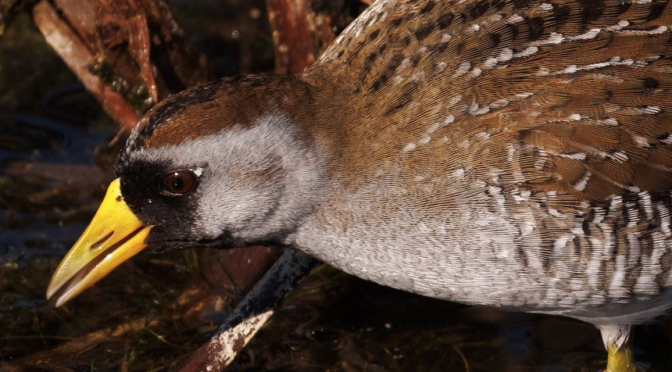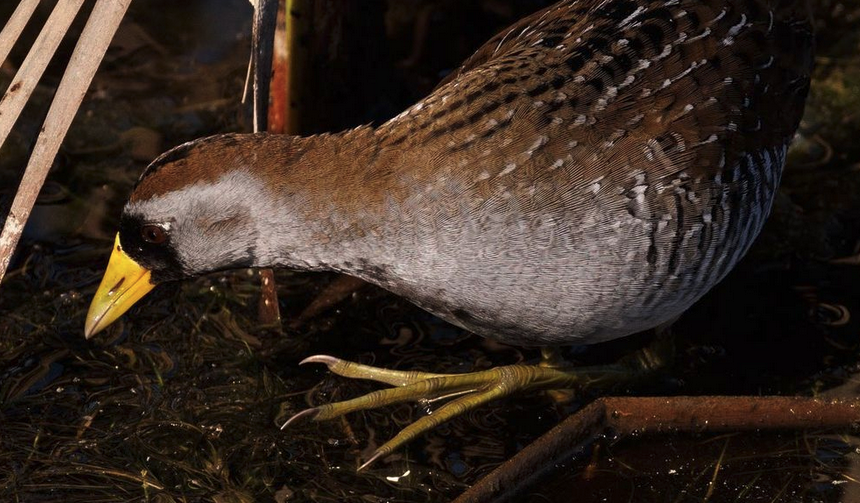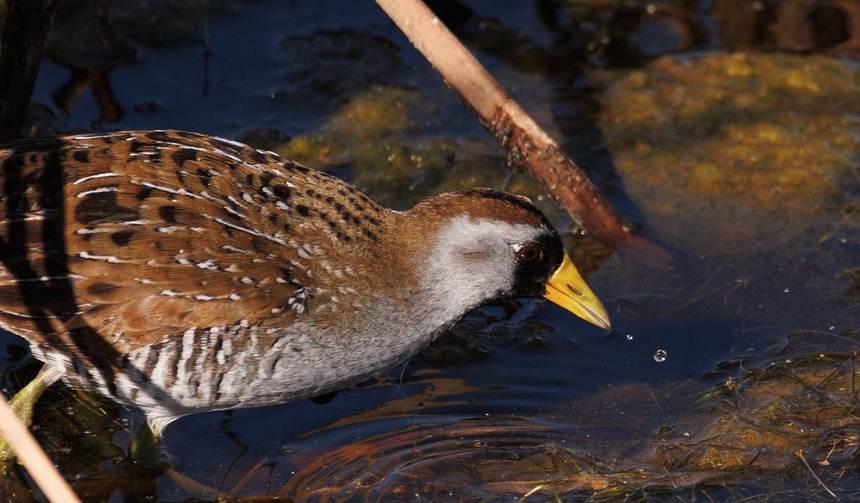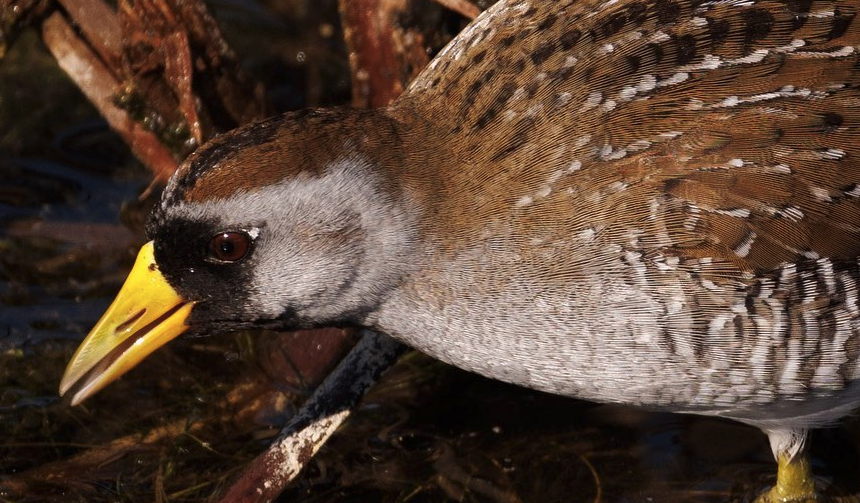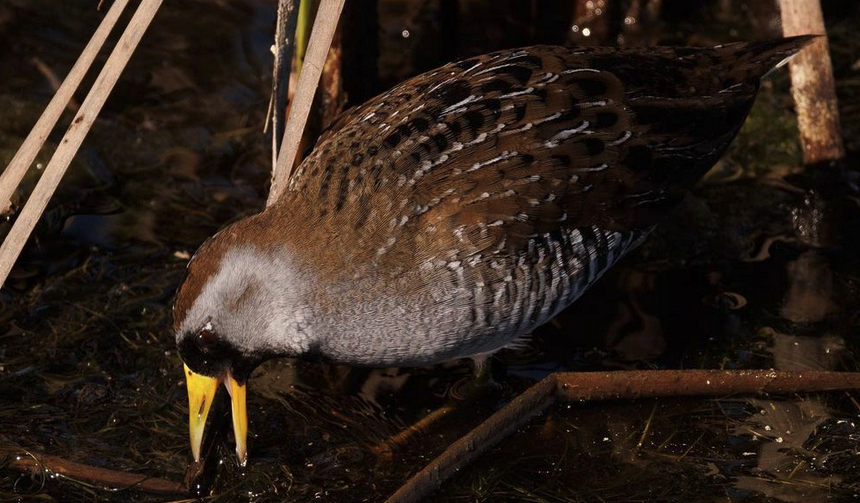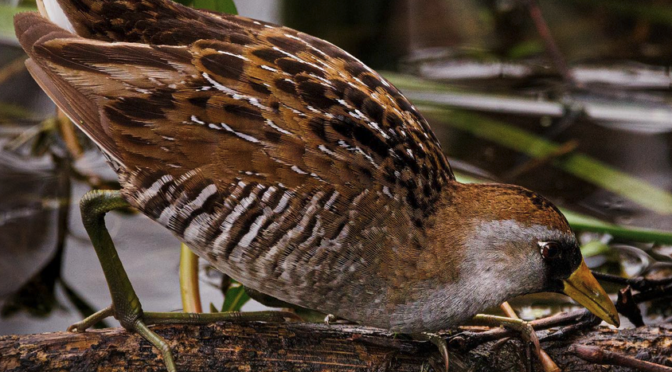By Sally Siko
Here’s a bird that I’m looking forward to seeing again this spring, the Sora.
I photographed this handsome fella at Huntington Beach SP last April.
I’d never been able to get a clear look of one until that day so it was incredibly rewarding to photograph this bird as he picked his way through the grassy shoreline of the marsh pond.
Such a fun moment!

Primarily found in the eastern counties of the Carolinas, Soras inhabit freshwater marshes, swamps, and wetlands with dense vegetation, where they can hide and forage for food.
They are voracious eaters of insects, seeds, and aquatic vegetation, foraging by picking food from the water’s surface or probing that bright yellow bill into soft mud in search of a snack.


At a length of around 8” these birds are relatively small. Their diminutive size combined with a proclivity to sneaking around dark tangled reeds makes them kind of tough to see.
Yet despite being secretive, Soras are known for their distinctive whinnying call, which they use to communicate with each other. This means you can locate one by listening for them whenever your birding in their favored habitats.
Soras are a winter and spring resident of the Carolina’s with peak sightings occurring in April.
This means you’ve got about 6 weeks or so to enjoy them before they head north for their breeding season ahead.
Aren’t they lovely?
Btw, I’ve got several South Carolina group birding trips available for booking this year so if you’d like to join me to go bird watching in the low country this year, check the link below for my tour schedule and details.
Photos by @sally_siko of @bestlife_birding on my mighty mirrorless monster, the @canonusa #R5


